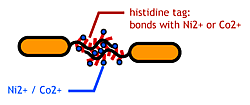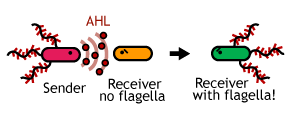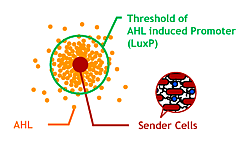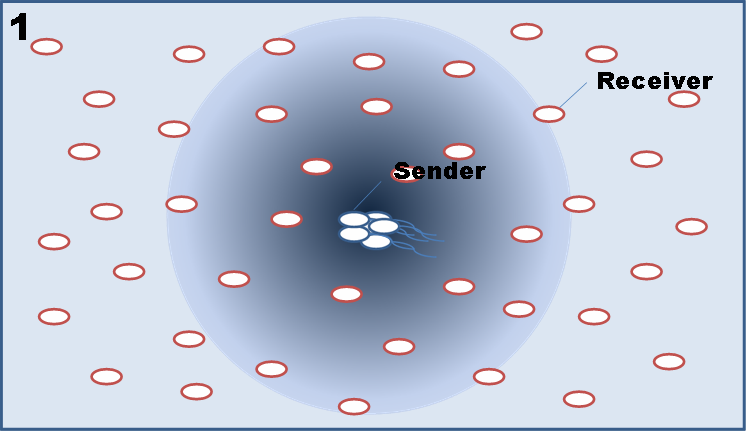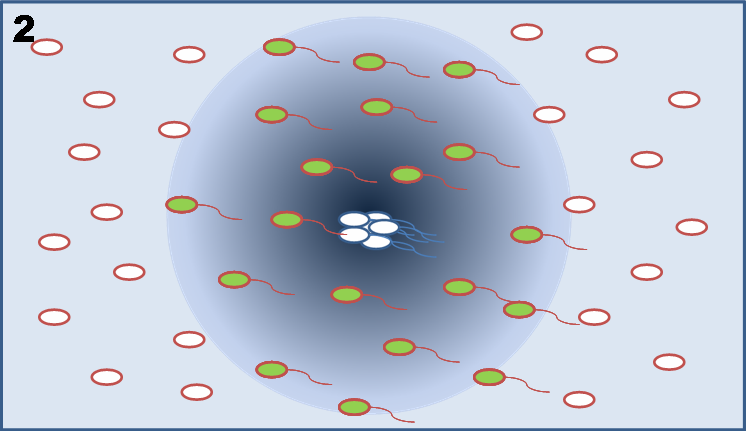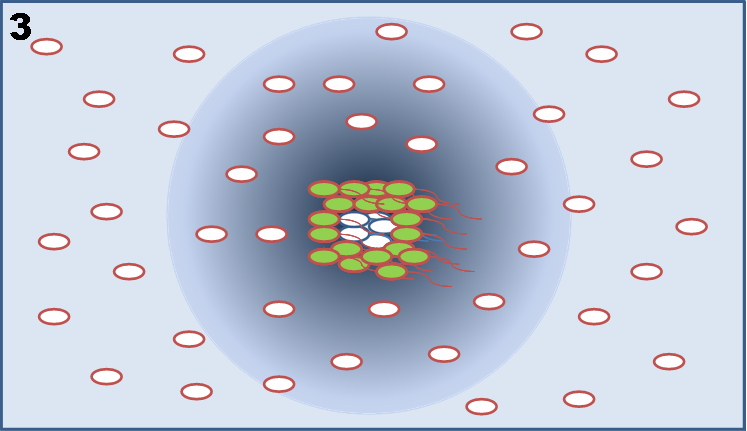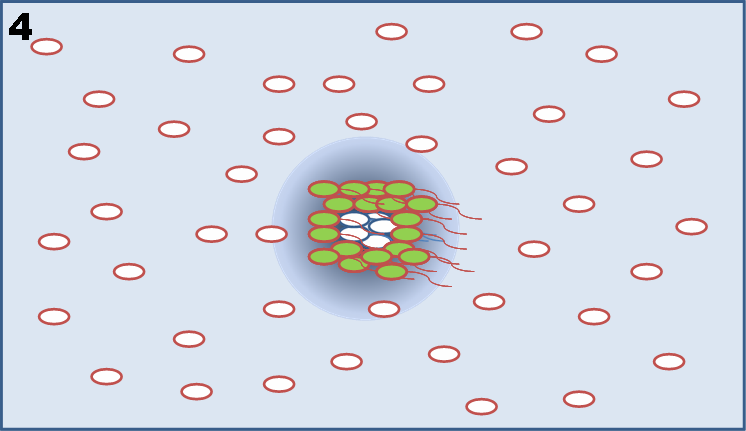Chiba/Project Design
From 2007.igem.org
|
Introduction | Project Design ( 1.Sticky Hands | 2.Communication | 3.Size Control ) | Making Marimos | Our Goal || Team Members | メンバ連絡簿 |
Project Design
Concept
ものがたり
 社団法人 農林水産技術情報協会http://www.afftis.or.jp/index.html
社団法人 農林水産技術情報協会http://www.afftis.or.jp/index.html
ばらばらになっている大腸菌を一ヶ所に集めて吸着させて、まりものような球体の大腸菌の集合体を作ることを目指した。(We aimed to make a spherical gathering of bacteria such like marimo by scattered bacteria aggregating and sticking each other.)
What our system requires
1.Sticky TagMake a His-tagged Flagella. We aimed to stick bacteria by displaying histidines (which bonds with metal ions) on the flagellar fillament. |
2.Communication違う遺伝子回路を持つ2つの細胞(sender&receiver)に分ける.あらかじめお互い結合しているSenderが,周りのreceiverにシグナルを与えてsticky handsを生やす.そして合体. |
3.Size ControlMake an AHL concentration gradient for quorum sensing. |
How Our System Works
- Senders stick to each other by way of metal ions using flagella displaying histidine tags. This becomes the core of Marimo. They also produce AHL to call receiver cells.
- Receivers express his/flagella and GFP in high [AHL]; only when they get close to the senders (core).
- Receivers stick to the core (the clustered senders) by way of metal ions.... one after another.
- This way, cluster and grow like a snowball. At the same time, receivers degrade AHL and thus limit the space where AHL reaches. By controlling the rate of AHL degradation, one can define the size of bacterial culster, MARIMO.


